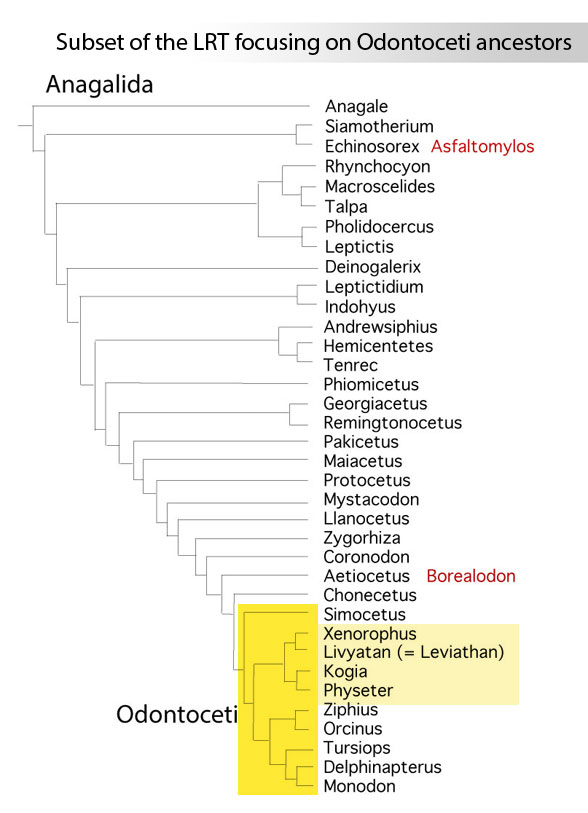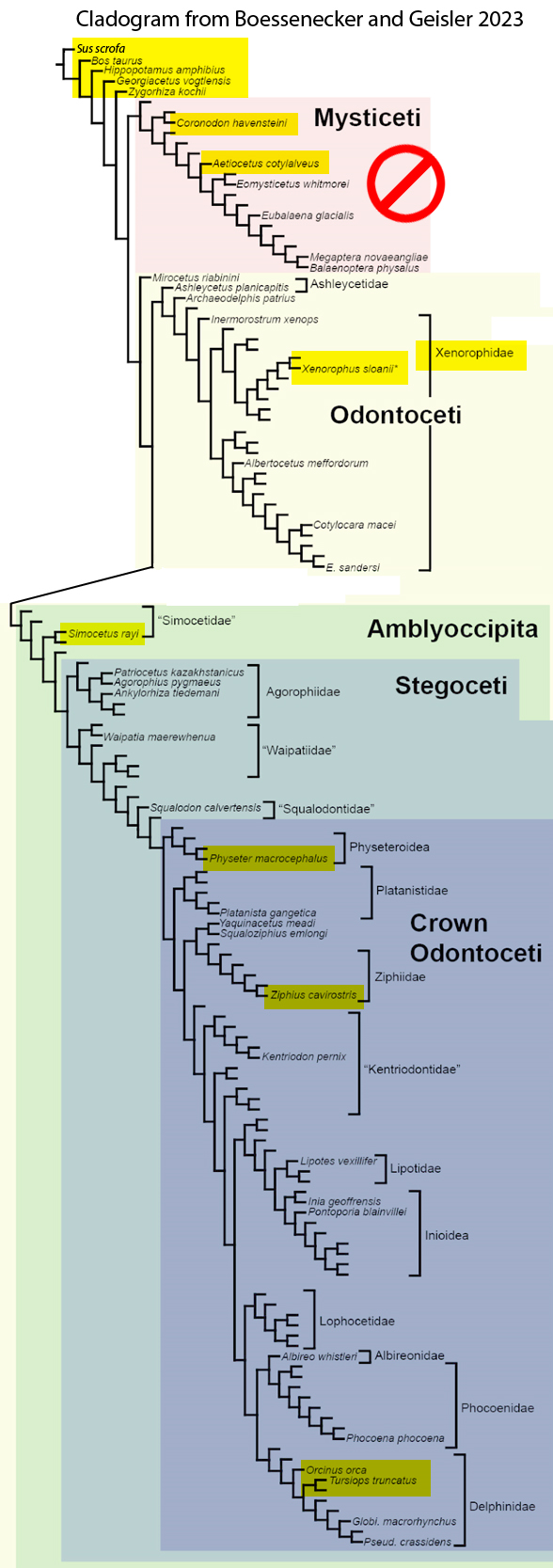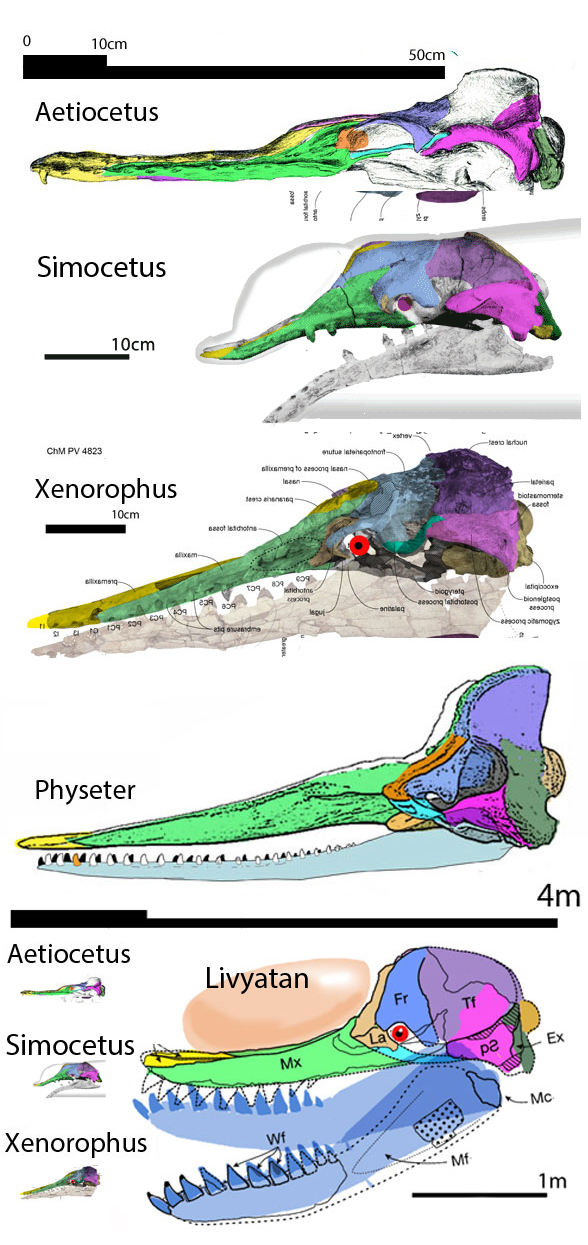Boessenecker and Geisler 2023
described new specimens of the South Carolina Late Oligocene odontocete, Xenorophus, (Figs 1, 3) otherwise known for over 150 years. The authors considered this taxon “an ancient dolphin” in their headline, but called it a “dolphin-size cetacean” in their abstract, then “an early diverging dolphin (stem Odontoceti)” in their text.
Xenorophus sloanii
(Leidy 1869, Boessenecker and Geisler 2023, Late Oligocene) nests with the much larger Livyatan in the LRT, not with dolphins and not prior to Simocetus, despite its dolphin-like size.
Taxon exclusion: Livyatan was not in the authors’ taxon list, but was mentioned in the text when they described worn down teeth and other trivia.

Phylogenetically
Xenorophus fits neatly into a gradual evolutionary sequence transitional between the archaeocete, Aetiocetus, and sperm whales (Physeter, Fig 3). The dolphin clade nests as the sister clade to the sperm whale clade in the LRT (Fig 2).
Boessencker and Geisler reported.
“the early toothed mysticete Coronodon appears to only have a single ‘hanging’ rib.”
By contrast, Coronodon is basal to Odontoceti in the LRT (Fig 2). Mysticetes arose from a completely separate list of ancestors that include oreodonts, mesonychids, hippos, anthracobunids and desmostylians in the LRT. The myth of cetacean monophyly is traditional. It needs to stop.

Sadly,
whale experts Boessenekcer and Geisler still follow the myth that pigs, cows and mysticetes (baleen whales) are related to the clade Odotoceti (Fig 4). This is what they are still teaching at the university level. Build your own LRT to confirm, refute or modify this hypothesis of toothed whale interrelationships.
I would hate to be a whale expert nowadays. Due to peer group (= academic pressure) they don’t have the freedom to test new taxa and develop new hypotheses. They are stuck with pigs and cows for outgroup taxa. It’s good to be independent of this influence.

In the LRT,
adding taxa recovered anagalids, sengis and tenrecs as odontocete ancestors (Figs 2, 5). Andrewsiphius (Fig 5) is considered a basal whale by Wikipedia, and it nests basal to extant tenrecs in the LRT. More evidence that adding taxa, as in the LRT, resolves phylo issues.
Taxon exclusion remains the number one problem facing paleontology.
References
Boessenecker RW and Geisler JH 2023. New Skeletons of the Ancient Dolphin Xenorophus sloanii and Xenorophus simplicidens sp. nov. (Mammalia, Cetacea) from the Oligocene of South Carolina and the Ontogeny, Functional Anatomy, Asymmetry, Pathology, and Evolution of the Earliest Odontoceti. Diversity 2023, 15, 1154.
https:// doi.org/10.3390/d15111154
Leidy J. 1869. The extinct mammalian fauna of Dakota and Nebraska, including an account of some allied forms from other localities, together with a synopsis of the mammalian remains of North America. J. Acad. Nat. Sci. Phila. Second Ser. 1869, 7, 8–472.
wiki/Simocetus
wiki/Dwarf_sperm_whale
wiki/Physeter
wiki/Livyatan (Leviathan)
wiki/Xenorophus


